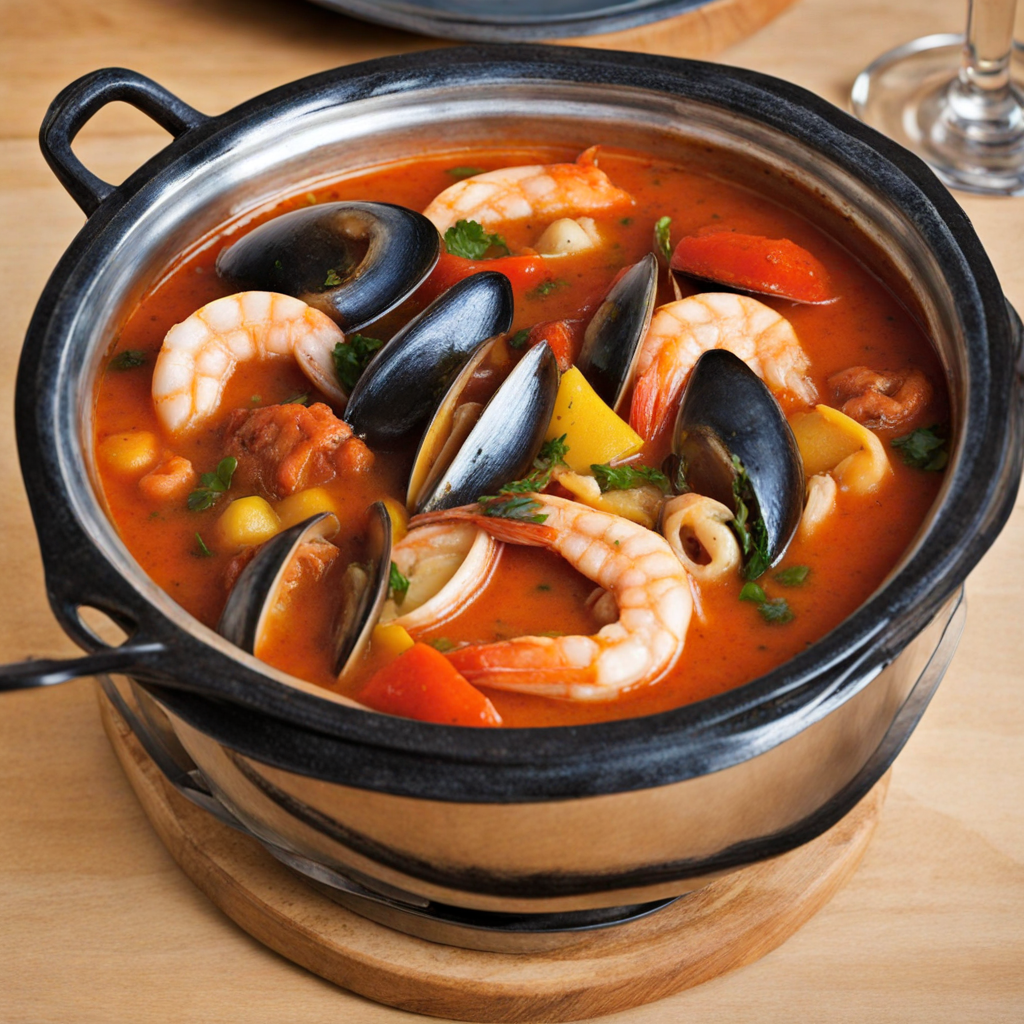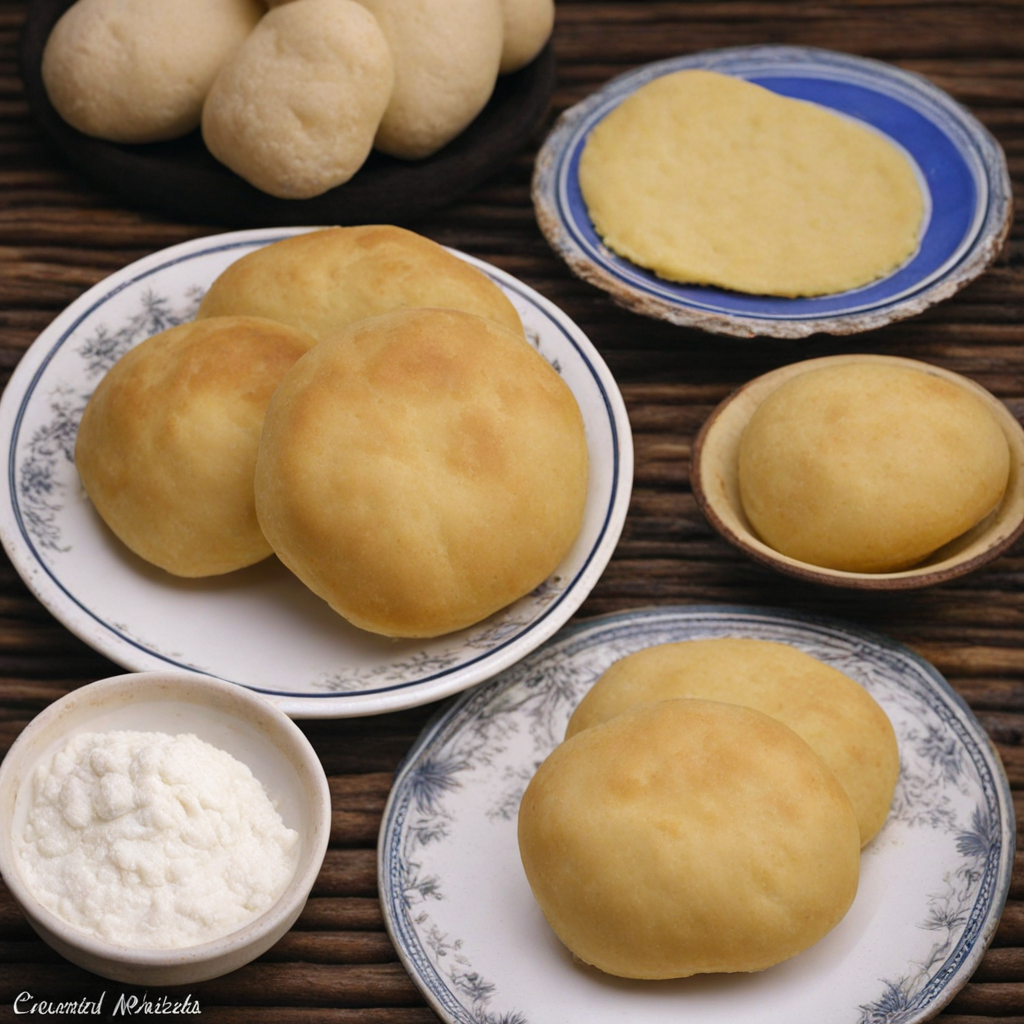Leche Asada
Leche Asada is a traditional Chilean dessert that beautifully marries simplicity with rich flavors, making it a delightful treat for anyone looking to explore new tastes. This dish is often likened to a custard or flan, but it stands out with its unique preparation and ingredients. The core of Leche Asada consists of milk, sugar, and eggs, which are blended together and baked to create a silky texture. The addition of vanilla enhances its sweetness, while a touch of cinnamon can provide a warm, aromatic undertone, making each bite a comforting experience. The baking process is what truly sets Leche Asada apart. It is traditionally baked in a water bath, which ensures even cooking and prevents the custard from curdling. As it bakes, the top develops a beautiful golden-brown crust, which adds a delightful contrast to the creamy interior. Once out of the oven, it is often allowed to cool and set, allowing the flavors to meld together, resulting in a dessert that is both light and indulgent. The crusty top can sometimes give way to a slightly caramelized flavor, which complements the smooth sweetness of the custard beneath. Served chilled, Leche Asada is often enjoyed as a refreshing finish to a meal or as a sweet snack any time of the day. It can be garnished with fresh fruit, a drizzle of caramel sauce, or simply enjoyed plain to savor its pure flavors. The accessibility of its ingredients and straightforward preparation make it a beloved dish in many Chilean households, and its delightful taste is sure to charm anyone willing to discover this sweet gem of Chilean cuisine.
How It Became This Dish
The Delicious History of Leche Asada: Chile's Custard Delight Leche Asada, a beloved dessert from Chile, is a delightful custard that has become a staple in Chilean homes and celebrations. This dish, which translates to "roasted milk," is not just a tasty treat; it is a culinary narrative that reflects the rich tapestry of Chile's history, culture, and social practices. Understanding its origins, cultural significance, and development over time offers a window into the broader landscape of Chilean gastronomy. #### Origins of Leche Asada The roots of Leche Asada can be traced back to the broader tradition of custard-making that spans many cultures across the globe. Custards, in various forms, have been enjoyed since ancient times, with recipes found in Roman and medieval European cookbooks. However, the specific version known as Leche Asada is firmly embedded in the culinary practices of Chile and its neighboring South American countries. The dessert is believed to have evolved from Spanish influences, particularly during the colonial period when Spain's culinary traditions mingled with indigenous ingredients and techniques. The Spanish brought with them a variety of dairy products, including milk, which became a staple in many South American diets. The use of eggs and sugar, along with baking methods, created a perfect storm for the development of various custards, including Leche Asada. Leche Asada is made from a simple yet harmonious blend of milk, sugar, eggs, and vanilla, often enhanced with cinnamon or lemon zest. The mixture is poured into a baking dish and baked until it forms a golden crust on top, giving it its name—roasted milk. The contrast between the creamy interior and the caramelized surface is what makes this dessert so appealing. #### Cultural Significance Leche Asada holds a special place in Chilean culture, often served at family gatherings, celebrations, and traditional feasts. Its popularity can be attributed to its accessibility—made from common ingredients that are readily available in Chilean households, it is a dessert that anyone can create, regardless of culinary skill level. The dish serves not only as a sweet ending to a meal but also as a symbol of comfort and nostalgia. For many Chileans, Leche Asada is linked to childhood memories, family gatherings, and the warmth of home-cooked meals. It is often prepared by grandmothers or mothers, passed down through generations, embodying a sense of familial love and tradition. In a broader cultural context, Leche Asada is representative of the Chilean spirit of "buena mesa," or the notion of enjoying good food and company. Meals are an important aspect of Chilean social life, and desserts like Leche Asada play a crucial role in bringing people together. Whether served during major holidays like Fiestas Patrias, Christmas, or simply on a Sunday family dinner, this dessert evokes feelings of unity and celebration. #### Development Over Time As with many traditional dishes, the preparation and presentation of Leche Asada have evolved over time. While the classic recipe remains popular, contemporary chefs have begun to experiment with variations, incorporating local flavors and modern techniques. For instance, some may infuse the custard with regional ingredients such as coffee, dulce de leche, or even fruits like mango and passionfruit, giving it a unique twist that reflects the diversity of Chile’s landscapes. In recent years, the rise of the culinary tourism sector in Chile has brought greater attention to traditional dishes like Leche Asada. Chefs and food enthusiasts from around the world are now exploring Chilean cuisine, leading to a renewed interest in its history and significance. This global spotlight has led to a revival of traditional cooking methods and an appreciation for the rich flavors that characterize Chilean food culture. Furthermore, as health consciousness grows among consumers, some have started to adapt classic recipes to align with contemporary dietary trends. Variations using non-dairy milk, natural sweeteners, and reduced sugar are becoming more common, allowing Leche Asada to remain relevant in a world where dietary preferences are diversifying. #### Leche Asada in Modern Chile Today, Leche Asada can be found in various settings—from humble family kitchens to upscale restaurants. It is a dessert that transcends age and social status, enjoyed by children and adults alike. The dish is often presented in individual servings, topped with fresh fruits or drizzled with caramel sauce, showcasing its adaptability and enduring appeal. In addition to being a cherished family recipe, Leche Asada has also found its way into popular culture. It appears in cooking shows, food blogs, and social media, where home cooks share their interpretations and tips for perfecting this classic dessert. The visual appeal of Leche Asada, with its golden crust and creamy filling, makes it an attractive subject for food photography, further cementing its status as a beloved dish. Moreover, during significant national celebrations, Leche Asada often takes center stage on dessert tables, symbolizing not just culinary tradition but also national identity. The dish serves as a reminder of Chile's rich culinary heritage, connecting modern Chileans to their ancestors and the land they inhabit. #### Conclusion Leche Asada is more than just a dessert; it is a cultural artifact that tells the story of Chile's history, social practices, and evolving culinary landscape. From its origins rooted in colonial influences to its place in contemporary Chilean cuisine, this delightful custard encapsulates the essence of what it means to gather around a table with loved ones, sharing not just food but also memories and traditions. As Chile continues to embrace its rich culinary heritage while adapting to modern tastes, Leche Asada stands as a testament to the enduring nature of comfort food. It invites us to savor not only its taste but also the stories and connections that it embodies, reinforcing the idea that food is an integral part of our shared human experience.
You may like
Discover local flavors from Chile







